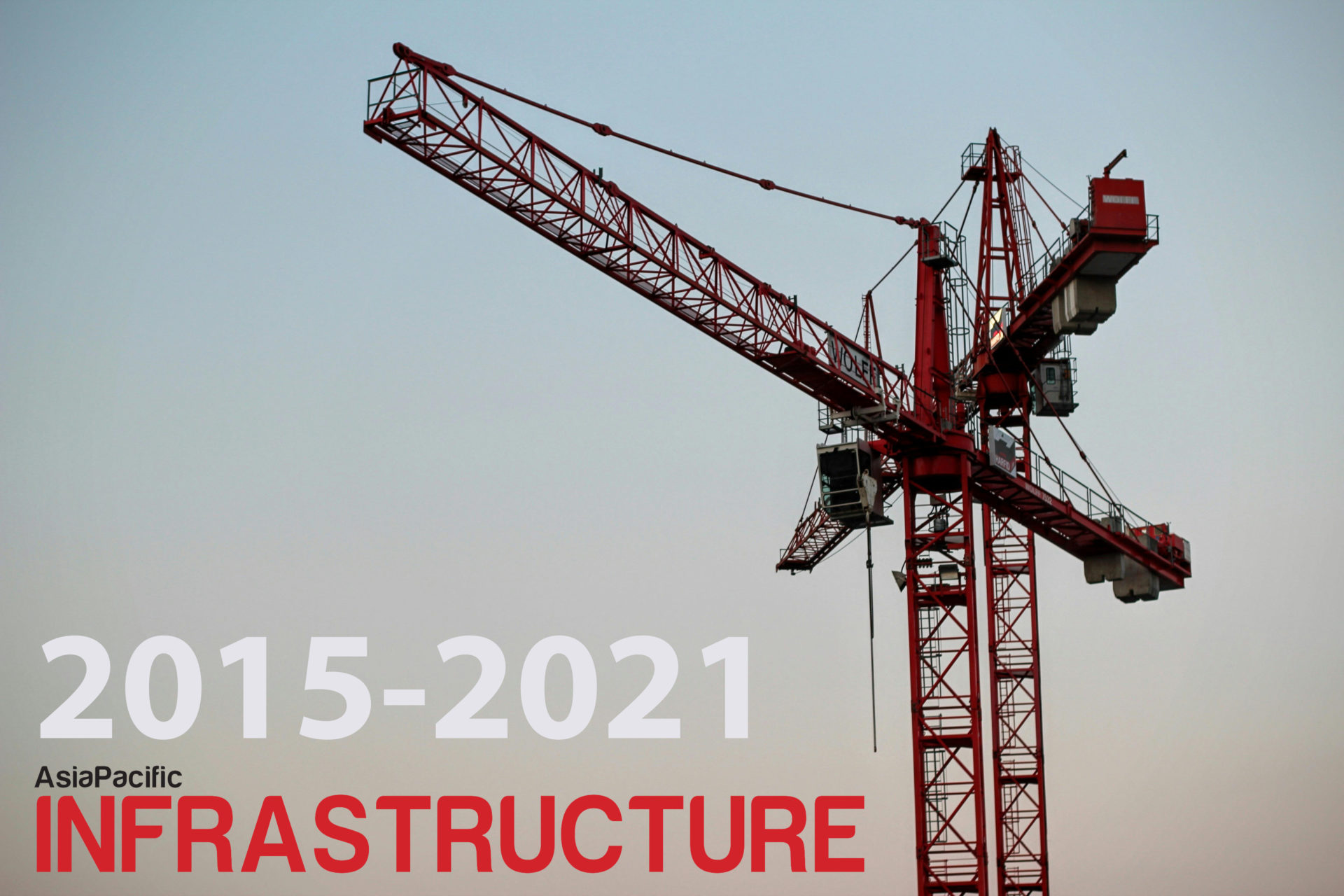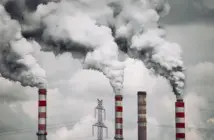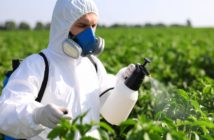The water sector has found itself caught up in the current pandemic in many ways. Our responses can help shape a more resilient future for the sector and for society as a whole

As the novel coronavirus disease known as COVID-19 continues to sweep across the globe, water professionals have been called upon to respond and work together in new ways and at unprecedented scales. As the pandemic locked down entire cities, families and firms had to re-assess their priorities. In doing so, they have recognised anew the worth of clean water, safe hygiene and dignified sanitation as more than just modern conveniences. They value our work as a critical force of health and life.
It has been said that war is a catalyst for transformation; it accelerates social and technological changes quietly under way. So it is with COVID-19. As governments, businesses and civil society race to defeat the invisible enemy, water professionals may discover in our health and economic crisis a window of opportunity. If we seize the moment, we can lock in reforms and innovations that transform our societies to become far more integrated, innovative, inclusive and resilient than before.
Local needs, global connections
The existential threat of this pandemic has led previously isolated or balkanised institutions – from local to global scales – to recognise how we are all in this together and share responsibility to and for one another. Water professionals have long felt this high degree of commonality. Water’s fluid and dynamic linkages determine how we ensure safe access and treat wastewater to all parts of a city, knowing that a weak link in one place can undermine the integrity of the whole supply and sanitation network.
Now, this highly contagious virus has led everyone to adopt a similar mindset, focused on a shared destiny with former strangers. Neighbours self-organise ‘social distancing’. City officials invest in tele-health tools. Businesses set aside proprietary advantages to cooperate on critical needs. Regional governments synchronise responses. Research bodies make specific data generic. Private publications that kept information behind paywalls now share vital knowledge for the public good. Water professionals are deeply embedded in each step, each dimension, making bold decisions and adopting smart tactics to an extent that is unprecedented and, potentially, irreversible.
Witness just one aspect of sharing: digital water technologies. Before the pandemic struck, cities were broadly aware of advanced metering infrastructure, remote sensing, real-time controls, modelling and optimisation. Each was known to bring a greater degree of automation, safety and security to utility operations – but the tools were too often seen as curiosities, or luxuries, and so were deferred to the future. That future arrived at the dawn of 2020.
Today, billions of families have been kept at home all day, compounding pressure on residential toilets and taps. Industrial needs have grown volatile. As a result, utilities have, at last, won support and funds to integrate digital systems to deal with the rapid changes in use and demand, helping us prioritise action in response to network interruptions at a time of tight staffing levels. Every walk of life, including the water sector, has opened its eyes to the potential for flexible and remote working; those who most embrace digital technologies have proven better able to cope.
Beyond enhancing internal connections, COVID-19 has nudged water professionals to forge stronger links with those outside their service area, with neighbouring cities and even across national borders. When local health, lives and ecological systems demand constant attention, it is never easy to look up and outwards, but doing so is essential if our sector is to thrive.
As a profession, we are rightly conservative. Rather than chase any new shiny object, the need to secure water day after day demands that we stay loyal to what has always worked before. The opportunities afforded by digital technologies, however, will only be realised if we embrace them as part of a deliberate and ongoing process of improvement. During the pandemic, the sharing of innovation and intellectual property, and access to facilities, demonstrates our willingness and ability to contribute to the larger process of open innovation.
Harnessing pressure to change
This sudden push to invest in innovation comes just as utility revenues fall. The lockdown slowed industrial activity, which reduced commercial demand for water, which eroded utility revenues. Meanwhile, underemployment left fewer families able to pay water bills. Yet, rather than shut off clients, utilities have instead been aggressively reconnecting customers, while suspending meter reading and bill collection. In India, certain utilities saw their revenues stop. The topic of water revenue instability is hardly new. What’s unprecedented is the global scale and rapid speed with which massive change has emerged, posing new threats – and opening new possibilities – for nearly every utility.
Developing countries feel this pressure to change most acutely. There, washing hands has always required reliable access to clean water. But while basic hygiene and sanitation was extended to the less fortunate almost as a form of noble or philanthropic charity before COVID-19, the pandemic has amplified – through self-interest – the reality that stopping the virus in peri-urban slums prevents its spread to more upscale city centres.
As if by magic, the tired old reasons given for lack of basic access – weak capacity, tight budgets, not enough water, competing needs – suddenly ring hollow. Pandemic reinforced how no individual is an island. Poorer, underserved homes do not exist in isolation from surrounding neighbourhoods. This new reality helps water professionals cut through bureaucratic inertia and secure resources at a speed and scale that had been impossible just six months earlier. The question is how we can lock in this progress and ensure WASH remains politically a top priority long after COVID-19’s urgent threat subsides.
Wastewater – an epidemiological resource
Trust comes through transparency. For more than a century, water professionals have largely understood and communicated the critical value of basic WASH to prevent the spread of disease. Following this theme, IWA’s Task Force has helped draft a technical review on different aspects of wastewater treatment as they relate to the SARS-CoV-2 virus – especially around detection.
As COVID-19 is primarily a respiratory disease, it may seem that SARS-CoV-2 should be of relatively limited concern to our sector. But, in water, one always finds new and important realms to discover, knowledge gaps need to be filled, and reassurance provided.
In its review, the IWA Task Force tracked the ‘journey’ of the virus through: faeces; raw sewage; the primary, secondary, tertiary treatment stages; sludge; and water for reuse. These systemic connections – from individuals to cities, and from sewers to nature – raise other topics of potential concern. One such issue is aerosolised sewage. Treatment plant workers are the water profession’s equivalent to those in intensive care units of hospitals and clinics. As frontline workers, they must be adequately protected by use of standard personal protective equipment, especially at the headworks of plants, where aerosols are most likely to occur. The same concern arises for those who are exposed when they empty faecal sludge into collection facilities. The public may also want reassurance. While SARS-CoV-2 may be less likely than other viruses to survive and be transmitted through wastewater, we need reassurance on the level of risk.
At the same time, we know a milligram of prevention is worth a kilogram of cure. The presence of virus material has opened up the strong possibility to monitor wastewater as a tool for screening public health. Long before the pandemic, The Source covered how detecting traces of drugs in sewage helps public health officials focus limited resources to make inroads against the opioid epidemic (May 2018). Now, the IWA Task Force is exploring how we can leverage the same tools, techniques and approaches to find, and halt, pockets of the pandemic before it can spread.
The COVID-19 version of this cutting-edge effort tests for virus genetic material at wastewater treatment plants – sometimes detecting its presence even before symptoms show up and cases are reported. The early warning ability could open the way for broader testing to help support public health decisions on reinstating lockdown measures in response to secondary outbreaks. Given the variables, however, an important contribution of the IWA Task Force is to help in the exchange of experiences needed to support greater consistency in the methods used.
Implementation poses challenges. It is hard to estimate how many cases might be present in the population from the amount of virus detected in sewage, as so many parameters affect the measurement (nature and time of transport in a sewer, possible dilution with rainwater, temperature, etc). Nor can it assess risks to the vulnerable communities not served by centralised plants or sewer networks. Even so, the innovation holds exciting potential for the sector to expand its societal contributions, as water professionals learn to adapt the technology to circumstances in developing countries.
A robust sector means a stronger society
COVID-19 is not the world’s first coronavirus, nor will it be the last, probably, and its effects will linger. Indeed, in coming years, pandemics will present the water sector with constant challenges – and opportunities.
One opportunity stems from our imagination. For while the cessation of life and economic activity has exacted a massive and painful toll, it has encouraged and potentially accelerated a shift toward a more climate-friendly paradigm.
Water is the blade of climate change that will cut most deeply. To respond and adapt, our sector has begun pursuing energy-positive wastewater treatment, embraced nature-based solutions, and applied circular economy principles to urban systems. We can advance and expand these efforts in the current and post-COVID-19 era, backed with financing from progressive entities such as the Green Climate Fund and the European Bank for Reconstruction and Development.
A tangible opportunity arises through our pragmatism. We can help shape economic stimulus packages – many on the scale of modern-day Marshall Plans – to be socially inclusive, incorporate green infrastructure, and accelerate water’s digital transformation. Governments want to invest in ‘shovel-ready’ projects that can be rolled out fast at significant scale to boost recovery. Working at the nexus of public health and economic development, water professionals can adapt and advance our most urgent priorities. For example, leakage control – increasingly supported by digital technologies – offers returns on investment in energy savings in treatment and distribution.
Our profession has long worked behind the scenes and, as a result, has too often been taken for granted. We chose this career because we know water to be a connective force that unites people with each other and with the natural world.
It took this catastrophe to elevate our quiet work into the open, where it belongs. To ensure it remains a central priority for all, let us leverage this window of opportunity to integrate, innovate and collaborate in ways that link experience in industrialised and developing world communities alike.
Crises test us. Kept in isolation, the water sector could grow brittle, vulnerable to this pandemic or the next. By uniting and sharing experience through collective actions under IWA, our sector and our civilisation can emerge far more resilient than we ever imagined possible.
Dr Kala Vairavamoorthy, CEO of the International Water Association




